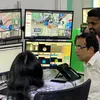Rise in the need for affordable quality healthcare in rural India
The COVID-19 pandemic has exposed the vulnerabilities in the Indian healthcare system. With rural India finding itself priced out of quality healthcare, will technology be able to make access to medicine more affordable?
The COVID-19 pandemic has highlighted an open secret — a majority of the people living in remote areas suffer from twin problems when it comes to healthcare, access to quality healthcare and affordability.
Due to historical distortions in the spread of the medical health infrastructure in India, rural areas and semi urban areas often suffered from a relatively shoddy medical infrastructure. People living in smaller towns and semi urban centres, more often than not, have had to pay a higher price for healthcare.
Not only did they have to travel some 100 kilometres, on an average, to the nearest good healthcare facility, even the fees and other charges usually have been higher in the bigger towns.
Both during the first and second wave of pandemic, people across India witnessed how medical facilities collapsed under the weight of urgent medical care. Shortage of oxygen supply was a nightmare that none of us would even want to remember.
To be fair, India was no different from other major economies such as the US and Europe, which also witnessed the collapse of the medical and healthcare services system amid the surge of COVID-19 cases.
Now, thankfully, barring a few states such as Kerala and Maharashtra, the rest of the country is witnessing a drastic fall in the number of COVID-19 cases. With vaccinations gaining pace, and people by and large sticking to COVID-19 appropriate behaviour, I am sure that we are more prepared now than ever before to face any more sudden spurts of the virus attacks.
But, when it comes to the non-pandemic, non-contagious medical afflictions, the healthcare system in tier 3 and tier 4 cities remains much to be desired.
Although, there has been improvements in the health infrastructure, both due to increased government spending and private sector initiatives, our population pressure means even the increases seem to not to make a lot of difference.
Ironically, it is the increased life expectancy that has directly impacted many households as growing medical expenses for the lower and lower middle class add to their problems.
With the public health system in desperate need of upgrades in physical and medical infrastructure and trained doctors and nursing staff, people in smaller towns and villages are forced to turn to private hospitals and clinics.
While medical facilities are out of reach for several Indians, a section of Indian society, which can afford medical care, can access top level healthcare. In fact, several Indian cities such as Chennai, Bengaluru and Hyderabad, are among top destinations for medical tourism.
But a majority of Indians find themselves priced out of quality healthcare. For several middle-class families, hospitalisation and healthcare costs in normal times destroy their budgets and even plunge them into severe debt. And at a time when job losses and failing businesses have become the norm, affordable healthcare has become even more of a challenge.
Reliable and accurate data set points on these are not yet available for government to make appropriate healthcare policy that covers all citizens. But suffice to say, the case for reaching affordable health care for the urban poor is the strongest now than ever before.
We, in the medical fraternity and medical administration, must be thankful to the technology that is enabling reaching medical services through telemedicine to villages, small towns and cities.
Firstly, technology has made it possible for consulting with renowned experts and specialist doctors from remote areas, and this too at a fraction of the cost. Elimination of transport costs, and the travel stress have transformed the healthcare landscape in the country.
As India gets more and more urbanised with each passing day, the rapid spread of internet and digital economy, the future is telemedicine seems promising.
Edited by Affirunisa Kankudti
(Disclaimer: The views and opinions expressed in this article are those of the author and do not necessarily reflect the views of YourStory.)







